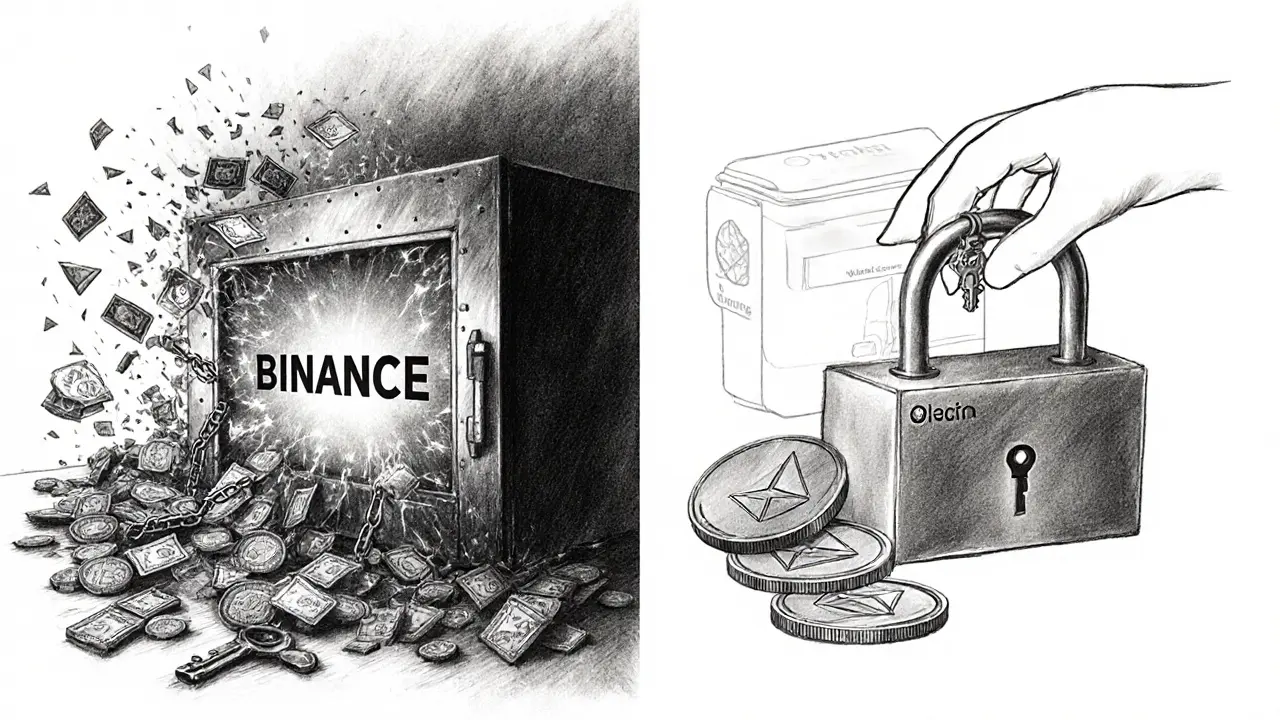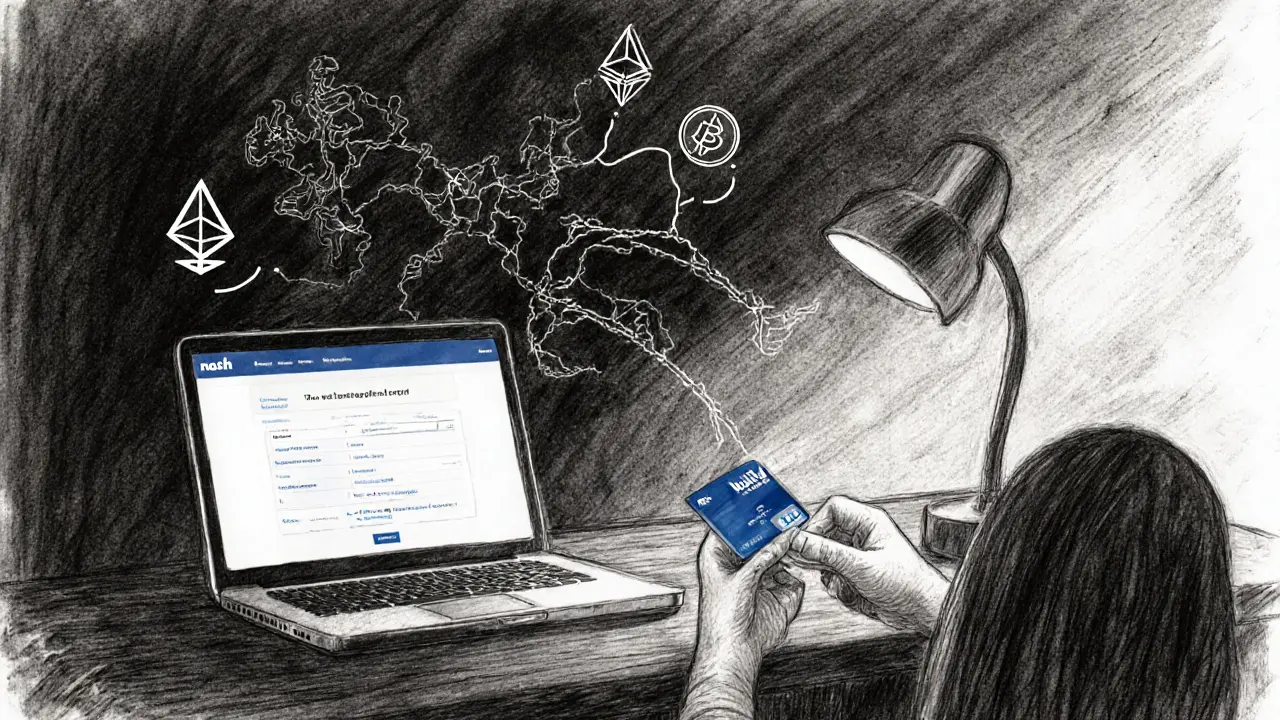Nash Slippage Calculator
Estimate Your Trade Slippage
Based on Nash's current liquidity (approx. $50,000 daily volume)
Estimated Slippage
Total Cost
Most crypto exchanges take your money and hold it for you. That’s fine until they get hacked, go bankrupt, or freeze your account. Nash crypto exchange flips that model entirely. It doesn’t hold your keys. You do. And if you’re tired of trusting big platforms like Binance or Coinbase with your Bitcoin, Nash offers a real alternative-especially if you live in Europe.
What Is Nash Crypto Exchange?
Nash isn’t just another crypto app. It’s a non-custodial exchange built for people who want to trade crypto without giving up control. Founded in 2017 by Fabian Vogelsteller-the guy who created the ERC-20 standard-it launched its live exchange in February 2020. Headquartered in Liechtenstein, it operates under strict EU regulations through its partner, Modulr Finance B.V., a Dutch Central Bank-authorized payment provider. Unlike centralized exchanges, Nash never touches your private keys. Your crypto stays in your wallet. Trades happen directly on-chain using an order book model, not automated market makers like Uniswap. That means you get price quotes you can actually trust, not slippage surprises.How Nash Works: Non-Custodial, But Still Easy
You don’t need to be a blockchain expert to use Nash. Download the app (iOS 16.1+ or Android), complete KYC through Modulr’s regulated system, and you’re ready to go. You can fund your account via SEPA, iDEAL, or IBAN transfers-no credit card needed. Once funded, you can buy Bitcoin, Ethereum, USDT, USDC, and over 3,000 other tokens directly with euros or other fiat currencies. The interface is clean. Tap “Buy,” pick your coin, enter the amount, and confirm. Nash charges a flat 1% fee on purchases. Maker fees? Zero. No withdrawal fees. No network fees. That’s rare. Most DEXs pass on gas costs to you. Nash absorbs them. The real magic? You can spend your crypto like cash. Nash offers a debit card that lets you pay anywhere Visa is accepted. Your crypto is converted to euros on the fly. You can even set up automatic spare change investments-round up your coffee purchase and invest the difference in ETH or BTC.Security: Your Keys, Your Rules
Nash uses Multi-Party Computation (MPC) encryption, the same tech used by institutional wallets like Coinbase Custody. That means no single point of failure. Even if Nash’s servers get hacked, your funds are safe because they’re never stored there. You can set transaction limits, whitelist addresses, and block transfers to unknown wallets. If you’re paranoid about losing access, you can link a hardware wallet like Ledger or Trezor directly via WalletConnect. No seed phrases ever leave your device. Compare that to Binance, which lost $400 million in a 2019 hack, or FTX, which vanished with $8 billion in customer funds. Nash doesn’t have that risk. It can’t steal your crypto. It can’t freeze your account. It can’t go bankrupt and leave you with nothing.Liquidity: The Big Catch
Here’s the problem: Nash doesn’t have much volume. On December 2, 2021, Nash’s 24-hour trading volume was $51,881. That’s down from $2.47 million just ten months earlier. By contrast, Binance does over $39 billion daily. Uniswap clears $1.2 billion. Nash is tiny. What does that mean for you? Slippage. If you try to buy $2,000 worth of ETH, you might end up paying 2.5% more than the market price. Users on Reddit and CryptoSlate report failed trades during high volatility. If you’re a day trader or want to move large amounts, Nash isn’t for you. But if you’re buying $100 or $500 of Bitcoin once a month? You won’t notice the difference. And you’ll sleep better knowing your assets aren’t sitting on a centralized server.
Features That Actually Matter
Nash isn’t trying to be everything. It’s focused on three things: safety, fiat on-ramps, and spending crypto.- Fiat on-ramp: Deposit euros directly from your bank. No third-party processors. No delays.
- IBAN account: Get a real European bank account number. Receive salaries, pay bills, track expenses-all in one app.
- Debit card: Spend crypto anywhere Visa works. No need to cash out first.
- High-yield savings: Earn up to 22% APY on stablecoins (as of late 2024). That’s way higher than any bank.
- Multi-chain support: Ethereum, Polygon, Avalanche, Solana. You can swap across chains without bridging manually.
Who Is Nash For?
Nash isn’t for everyone. It’s for a very specific type of user:- You live in Europe and want to buy crypto with your bank account.
- You care more about security than trading volume.
- You want to spend crypto like regular money.
- You’re not trying to flip altcoins for quick profits.
How It Compares to the Competition
| Feature | Nash | Coinbase / Kraken | Uniswap / PancakeSwap |
|---|---|---|---|
| Custody | Non-custodial (you hold keys) | Custodial (they hold keys) | Non-custodial |
| Fiat On-Ramp | Yes (SEPA, iDEAL, IBAN) | Yes (global) | No |
| Debit Card | Yes | Yes (Coinbase Card) | No |
| Trading Volume | $50k/day (2025 est.) | $10B-$40B/day | $1B-$2B/day |
| Fee on Buy | 1% | 0.5%-1.5% | 0.3% + gas |
| Withdrawal Fees | None | Yes | Yes (gas) |
| Best For | European users, long-term holders, safety-first | Beginners, high-volume traders | DeFi power users, altcoin traders |

Downsides and Risks
Nash isn’t perfect. Here’s what you should know:- Limited liquidity: Large trades will move the price. Don’t try to buy $10,000 of SOL in one go.
- Slow support: Customer service takes 24+ hours to respond. No live chat.
- Small community: Only 12,500 members on Discord. Compare that to Ethereum’s 15 million.
- App bugs: Some users report occasional crashes when switching between chains.
- Token performance: The NEX token has lost 92% of its value since launch. Don’t expect it to recover anytime soon.
Getting Started: Step-by-Step
1. Download the Nash app from the App Store or Google Play (93 MB on iOS).2. Create an account with your email and phone number.
3. Complete KYC using your government ID. Modulr Finance handles this-expect 1-3 business days.
4. Link your European bank account via SEPA or iDEAL.
5. Deposit euros. You can now buy crypto instantly.
6. Enable the debit card in settings and order it (free shipping in EU).
7. Optional: Connect your Ledger or Trezor via WalletConnect for extra security.
That’s it. No seed phrases. No complex wallet setups. Just a simple, secure way to own and spend crypto.
Final Verdict: Should You Use Nash?
Yes-if you’re European, value safety over speed, and want to use crypto in real life. Nash is one of the few platforms that actually bridges the gap between traditional banking and decentralized finance without compromising security. No-if you’re trading large sums, chasing meme coins, or live outside Europe. The low liquidity makes it impractical for active traders. And if you’re in the U.S., your options are severely limited. Nash won’t replace Binance. But it doesn’t need to. It’s not trying to be the biggest. It’s trying to be the safest. And for a growing number of users who’ve seen too many crypto exchanges disappear overnight, that’s worth more than volume.Is Nash Crypto Exchange safe?
Yes, Nash is one of the safest crypto platforms available. It’s non-custodial, meaning you control your private keys at all times. Funds are secured using Multi-Party Computation (MPC) encryption, and the platform partners with Modulr Finance B.V., a Dutch Central Bank-authorized institution. Unlike centralized exchanges, Nash cannot be hacked to steal user funds because it never holds them.
Can I use Nash if I’m not in Europe?
You can download the app and use the wallet, but you won’t be able to deposit fiat currency unless you have a European bank account. Nash’s fiat on-ramp only works with SEPA, iDEAL, and IBAN transfers, which are limited to the European Economic Area. Users outside Europe can still hold crypto, but can’t buy it directly with USD, CAD, AUD, or other non-EU currencies.
Does Nash charge withdrawal fees?
No, Nash does not charge withdrawal fees, transfer fees, or network fees. Even though blockchain transactions require gas, Nash covers those costs for you. This is rare among decentralized exchanges, which typically pass gas fees directly to users. The only fee is a 1% flat rate when you buy crypto with fiat.
How does Nash compare to Uniswap?
Nash uses a traditional order book model with real buyers and sellers, while Uniswap uses automated market makers (AMMs) that rely on liquidity pools. Nash offers better price stability and lower slippage for small trades, but Uniswap has vastly higher liquidity and supports thousands more tokens. Nash also supports direct fiat deposits and has a debit card-features Uniswap doesn’t offer at all.
Can I stake or earn interest on Nash?
Yes. Nash offers high-yield savings on stablecoins like USDC and DAI, with rates up to 22% APY (as of late 2024). This is not staking in the traditional sense-it’s a lending program where your stablecoins are lent out to institutional borrowers. Returns are high but come with counterparty risk. Always understand that high yields mean higher risk.
What cryptocurrencies does Nash support?
Nash supports over 3,000 cryptocurrencies across 10+ blockchains, including Bitcoin (BTC), Ethereum (ETH), Tether (USDT), USD Coin (USDC), Polygon (POL), Dai (DAI), and Solana (SOL). However, liquidity varies widely. Popular assets like BTC and ETH trade smoothly, while newer or lesser-known tokens may have low volume and high slippage.
Is Nash regulated?
Yes. Nash operates under Liechtenstein’s Blockchain Act and partners with Modulr Finance B.V., a Dutch Central Bank-authorized Electronic Money Institution (Firm Reference Number R182870). This makes Nash compliant with the EU’s MiCA regulation, which came into force in June 2024. It’s one of the few crypto platforms that meets strict European financial standards.


Nash is cool if you just wanna buy a little BTC and forget about it
I’ve been using Nash for six months now. Bought my first 0.02 BTC with SEPA, used the card to pay for groceries, and never felt safer. No drama, no stress. Just crypto that works like cash.
Volume is 50k/day? LOL. You're telling me to trust a platform that can't move $1M in ETH without 3% slippage? This isn't finance-it's a hobby project with a debit card. 🤡